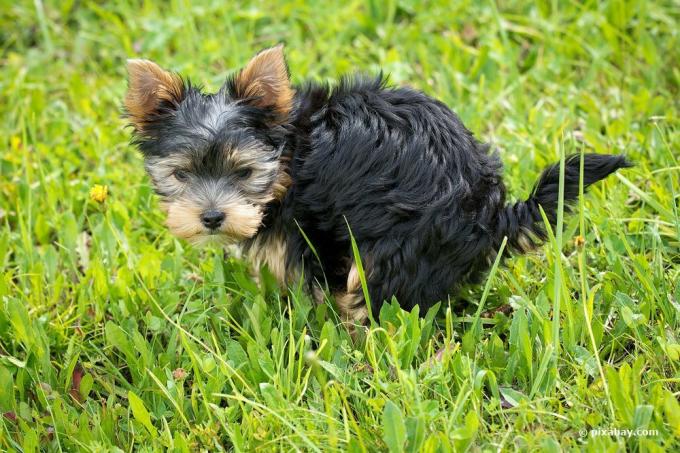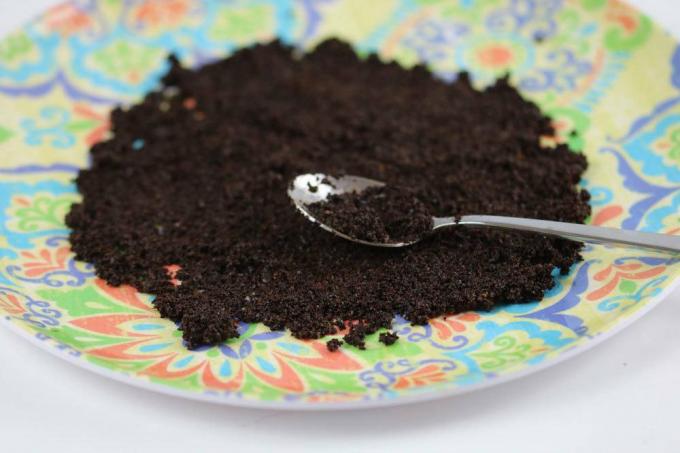
table of contents
- Recognize dog poop
- Eliminate dog feces
- Prevent
- Use the dog's sense of smell
- Coffee grounds
- Appeal to the dog owner
- water
- Change the subsurface
- Ultrasound equipment
- Fencing
Dog poop in the garden isn't just a gross affair. Dogs can transmit worms and if your own dog is not the culprit, you have no overview of any worming that has taken place.
Recognize dog poop
A dog poop is apparently recognized quickly. But it is usually not that simple. While feces from larger dogs can be clearly identified, smaller ones can Pile of excrement from other animals too come. An important feature are any food residues in the faeces. If pips, berries, fur or feathers are visible, a wild animal has relieved itself in the front yard. For the further procedure, however, it is irrelevant which animal the droppings come from. You don't necessarily have to be able to recognize dog poop.

Eliminate dog feces
A dog poop in the garden is best either buried or removed with a shovel. Dog poop should not be buried in the lawn or vegetable patch, which is why it is disposed of with household waste or compost. Every tool that is used is thoroughly cleaned after use.
Note: Avoid touching dog poop with your bare hands, use gloves!
Prevent
So that you don't have to remove dog poop in the garden in the first place, you can try various measures to prevent the problem.

Use the dog's sense of smell
Dogs orientate themselves mainly with their nose. They also use their sense of smell to find a place for their droppings. Try to take advantage of this fact.
- plant strong smelling flowers or herbs in the front yard
- use special plants to keep dogs away
- spray dog deterrents if they do not harm dogs
Coffee grounds
Coffee leftovers also have a very strong smell and can successfully keep dogs away from the front yard. However, coffee grounds have the disadvantage that they acidify the soil strongly over time. Either you only use it near plants that prefer acidic soils or generally only in places that are not planted. So that coffee grounds can work, they must be laid out in large quantities.

Appeal to the dog owner
It is not the dog that is responsible for what it does, but the owner. Therefore, try to make dog owners aware of the problem. Use signs to ask that dogs not relieve themselves in their garden or at least that the dog poop be cleared away. In public facilities, dog owners are legally obliged to do so anyway and should therefore always have an appropriate waste bag with them.
Note: Sometimes a face-to-face meeting can help. However, this depends on the dog owner's ability to understand.

water
An irrigation system with a motion detector irrigates the garden whenever someone enters it. If a dog tries to get into the front yard or lawn, it will get wet. Most dogs then run away.
Change the subsurface
A temporary measure is to use pebbles or other unpleasant material for dogs in the garden as a substrate. These can also be grid plates that dogs do not like to step on. However, grid plates do not look particularly attractive in the garden and should be replaced by other options as soon as possible.

Ultrasound equipment
An ultrasound machine produces a high-pitched beep that is said to be uncomfortable for dogs. It can also be used to drive away cats or martens. However, it can happen that individual dogs or cats are not impressed by it, while the beep becomes annoying for people at some point.
Fencing
If no other measures help, all you can do is fence off your garden so that it is impenetrable for dogs. This can be done with a fence or a hedge. Hedge plants are at least not insensitive to dog urine and can be damaged. It should also be taken into account that the dog poop may not end up in your garden, but can still end up on the sidewalk in front of it. So the problem is not eliminated, only relocated. Perhaps an appropriately labeled electric fence is more helpful. The dog owner will have to make sure that his dog does not come too close to the fence. If it does happen, a docile dog will avoid the fence in the future.



